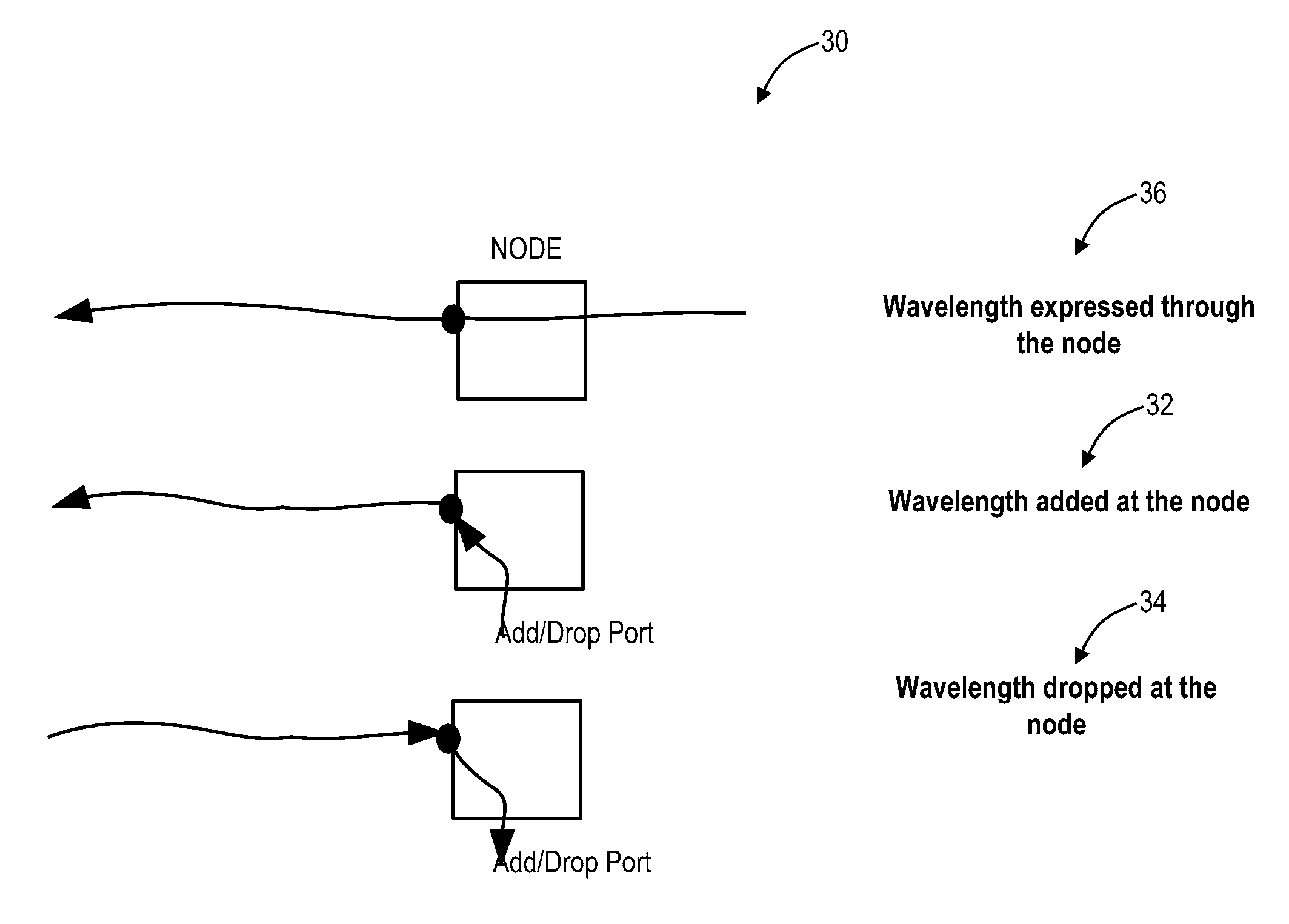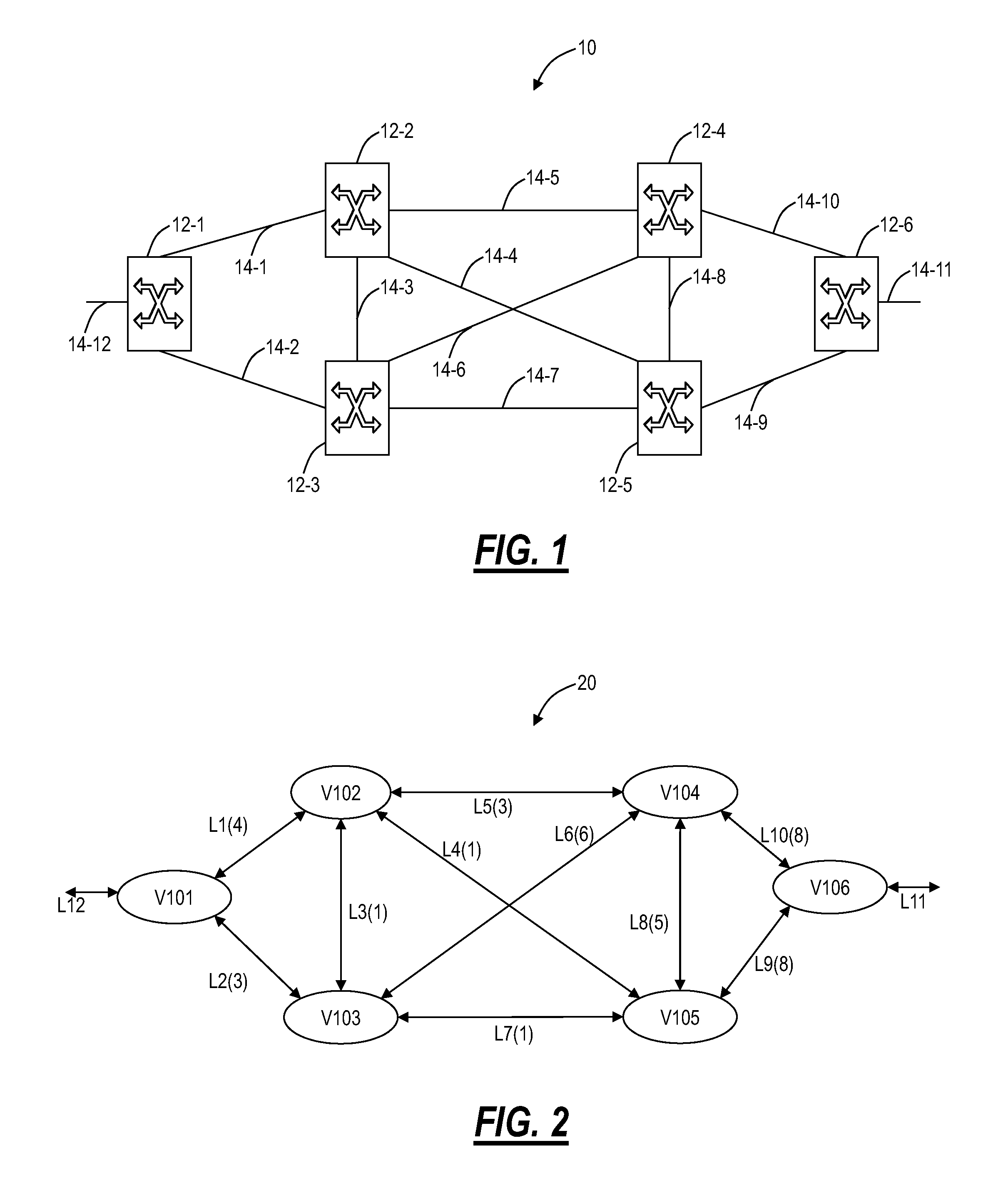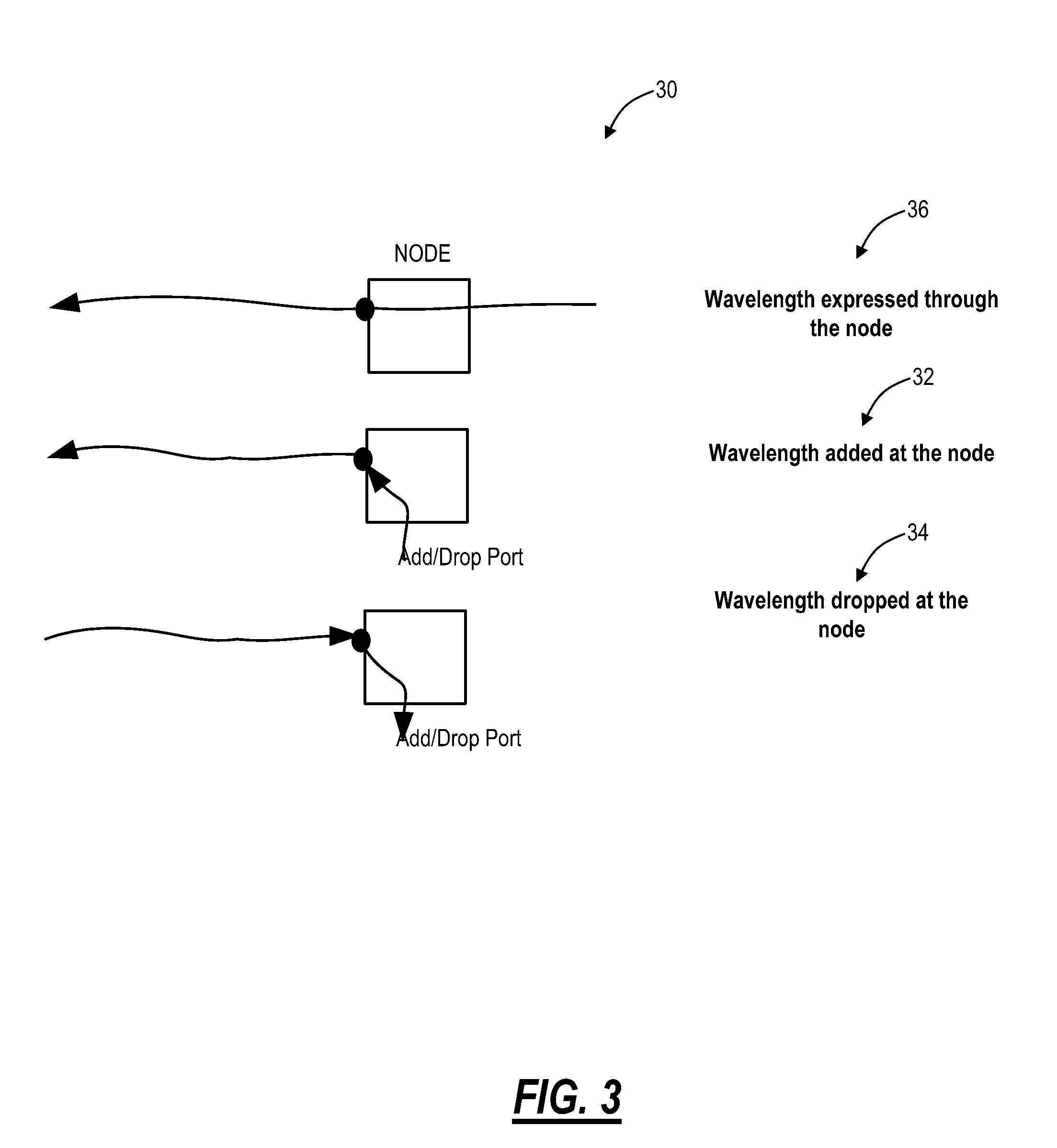Path computation systems and methods in optical networks
a computation system and optical network technology, applied in the field of optical network, can solve the problem of a regenerator with a higher cost of bias path computation over the regenerator, and achieve the effect of higher cost of bias path computation
- Summary
- Abstract
- Description
- Claims
- Application Information
AI Technical Summary
Benefits of technology
Problems solved by technology
Method used
Image
Examples
Embodiment Construction
[0027]In various exemplary embodiments, path computation systems and methods in mixed photonic and digital mesh networks define additional constraints required for paths in photonic network. The path computation systems and methods include shortest path algorithm that uses these constraints to compute paths in the photonic network. The definition of these constraints forms an important aspect of path computation algorithm to deliver an optimal path which follows wavelength continuity constraints. The constraints defined for the photonic network could fall into two broad categories, link constraints and nodal constraints. Routing in the electrical domain assumes that each node supports non-blocking switching, hence the computations for the digital network only use link constraints. In the photonic domain, the link constraints are extended to include not only resource availability but also resource capabilities as described herein. The Nodal constraints originate from the fact that th...
PUM
 Login to View More
Login to View More Abstract
Description
Claims
Application Information
 Login to View More
Login to View More - R&D
- Intellectual Property
- Life Sciences
- Materials
- Tech Scout
- Unparalleled Data Quality
- Higher Quality Content
- 60% Fewer Hallucinations
Browse by: Latest US Patents, China's latest patents, Technical Efficacy Thesaurus, Application Domain, Technology Topic, Popular Technical Reports.
© 2025 PatSnap. All rights reserved.Legal|Privacy policy|Modern Slavery Act Transparency Statement|Sitemap|About US| Contact US: help@patsnap.com



